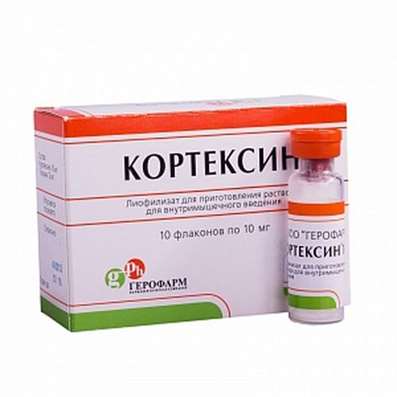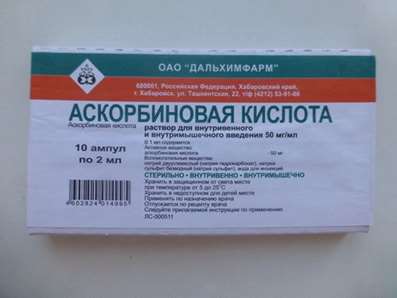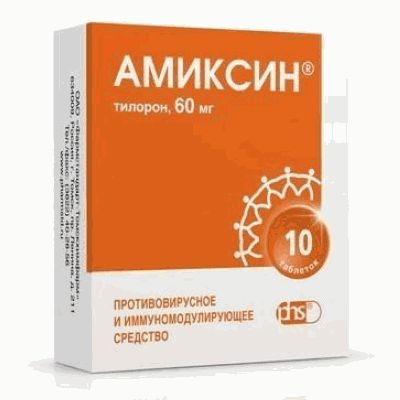Instruction for use: Valusal
I want this, give me price
Active substance Ketoprofen
ATX code M02AA10Ketoprofen
Pharmacological group
Non-steroidal anti-inflammatory drug (NSAID) [NSAIDs - Propionic acid derivatives]
Nosological classification (ICD-10)
M19.9 Arthrosis, unspecified
Change in brush with osteoarthritis, Osteoarthritis, Osteoarthrosis, Arthrosis of large joints, Pain syndrome in osteoarthritis, Pain syndrome in acute inflammatory diseases of the musculoskeletal system, Pain syndrome in chronic inflammatory diseases of the musculoskeletal system, Deforming arthrosis, Deforming osteoarthritis, Deforming osteoarthritis of joints, Osteoarthritis in the acute stage, Osteoarthritis of large joints, Acute pain syndrome with osteoarthritis, Post-traumatic osteoarthritis, Rheumatic osteoarthritis, Spondylarthrosis, Chronic osteoarthritis
M42 Osteochondrosis
Pain in spinal osteochondrosis, Cervical osteochondrosis, Radicular syndrome in osteochondrosis, intervertebral osteochondrosis, osteochondrosis, Osteochondrosis with radicular syndrome, Osteocondritis of the spine
M54.1 Radiculopathy
Acute sciatica, Radiculopathy, Radiculitis, Radiculitis with radicular syndrome, Acute radiculopathy, Pain syndrome with radiculitis, Subacute radiculitis, Radiculitis, Chronic radiculitis, Diseases of the spinal column
M54.3 Sciatica
Ishialgia, Neuralgia of the sciatic nerve, Sciatic neuritis
M54.4 Lumbago with sciatica
Pain in the lumbosacral spine, Lumbago, Sciatica, Lumbar syndrome
M67.9 Lesion of synovium and tendon, unspecified
Inflammation of the tendons, Inflammation of ligaments, Inflammation of tendons with injuries, Inflammation of tendons
M71 Other bursopathies
Bursitis, Bursopathy, Diseases of soft tissues, Osteoarthritis in musculo-articular diseases, Inflammatory disease of soft tissues, Subacute bursitis
M79.0 Other unspecified rheumatism
Degenerative rheumatic disease, Degenerative and rheumatic diseases of the tendons, Degenerative rheumatic diseases, Localized forms of rheumatism of soft tissues, Rheumatism, Rheumatism with a pronounced allergic component, Rheumatism of the articular and extraarticular, Rheumatic attack, Rheumatic complaints, Rheumatic diseases, Rheumatic disease of the spine, Relapses of rheumatism, Articular and extra-articular rheumatism, Articular and muscular rheumatism, Articular rheumatism, Articular syndrome with rheumatism, Chronic rheumatic pain, Chronic articular rheumatism, Rheumatoid diseases, Rheumatic diseases of the intervertebral disc
R52.9 Unspecified Pain
Pain after cholecystectomy, Pain shooting, Non-malignant pain, Obstetric and gynecological pain, Pain syndrome, Pain in the postoperative period, Pain in the postoperative period after orthopedic surgery, Pain of inflammatory genesis, Pain than cancer genesis, Pain syndrome after diagnostic procedures, Pain after surgery Diagnostic, Pain after surgery, Pain after orthopedic surgery, Pain after injuries, Pain after the removal of hemorrhoids, Pain at the non-rheumatic inflammation of nature, Pain in inflammatory lesions of the peripheral nervous system, Pain in diabetic neuropathy, Pain in acute inflammatory diseases of the musculoskeletal system, Pain when the tendon pathology, Pain smooth muscle spasm, Pain spasm of smooth muscles (renal and biliary colic, intestinal spasms, dysmenorrhea), Pain spasm of smooth muscles of internal organs, Pain spasm of smooth muscles of internal organs (kidney and biliary colic, intestinal spasms, dysmenorrhea), Pain in trauma syndrome, Pain with injuries and after surgical interventions, Pain in chronic inflammatory diseases of the musculoskeletal system, Pain with duodenal ulcer, Pain syndrome in gastric ulcer, Pain syndrome in gastric ulcer and duodenal ulcer, pain, Pain during menstruation, pain syndromes, painful condition, Painful foot fatigue, Sore gums when wearing dentures, Soreness of the cranial nerves exit points, Painful menstrual irregularities, Painful dressings, Painful muscle spasm, Painful teeth growth, Melosalgia, Pain in the area of the surgical wound, Pain in the postoperative period, Pain in the body, Pain after diagnostic procedures, Pain after orthopedic surgery, Pain after surgery, The pains of the flu, Pain in diabetic polyneuropathy, Pain for burns, Pain during sexual intercourse, Pain during diagnostic procedures, Pain during therapeutic procedures, for colds Pain, Pain in sinusitis, Pain in trauma, Pain traumatic, The pain in the postoperative period, Pain after diagnostic procedures, The pain after sclerotherapy, Pain after surgery, postoperative Pain, Pain postoperative and posttraumatic, posttraumatic pain, Pain when swallowing, Pain in infectious and inflammatory diseases of the upper respiratory tract, The pain of burns, The pain in traumatic muscle injury, Pain in trauma, The pain of tooth extraction, The pain of traumatic origin, Pain caused by spasm of smooth muscles, Expressed pain syndrome, Expressed pain syndrome, traumatic origin, Postoperative pain, Post-traumatic pain, Post-traumatic pain syndrome, Torpid pain, Traumatic pain, Traumatic pain, Mild pain, Moderately severe pain, Moderate pain, Polyarthralgia with polymyositis
R68.8.0 * Inflammatory syndrome
Painful syndrome of inflammatory genesis, Pain syndrome with inflammation of non-rheumatic nature, Pain syndrome with inflammatory lesions of the peripheral nervous system, Painful inflammation of the shoulder joint, Painful inflammation after trauma or surgery, Painful inflammation after surgery, Painful hemorrhoids, Inflammation of the tympanic membrane, Inflammation of the larynx, Inflammation of the gums, Inflammation of cellulose, Inflammation of lymph nodes, Tonsillitis, Inflammation of muscles, Inflammation of soft tissues, Inflammation of the mouth, Inflammation after surgery and trauma, Inflammation after orthopedic surgery, Inflammation after trauma, Inflammation in rheumatoid arthritis, Inflammation of the middle ear, Inflammatory gum disease, Inflammatory diseases of the eyelids, Inflammatory eye diseases, Inflammatory swelling of soft tissues, Inflammatory processes, Inflammatory processes after surgical interventions, Inflammatory process, Inflammatory Syndrome, Inflammatory syndrome of non-rheumatic origin, Inflammatory syndrome after surgery, Purulent infections, Infringements of function of a liver of an inflammatory etiology, Acute inflammation of the musculoskeletal tissue, Pre-inflammatory soft tissue inflammation
T09.5 Injury of unspecified muscle and tendon of the trunk
Muscle bruise
T14.3 Dislocation, sprain and damage to the capsular-ligamentous apparatus of the joint of the unspecified area of the body
Painful stretching of muscles, Pain and inflammation in tension, Dislocation of dislocation, Degenerative changes in the ligamentous apparatus, Edema due to sprains and bruises, Edema after interventions for sprains, Damage and rupture of ligaments, The musculoskeletal system is damaged, Damage to ligaments, Damage to the joints, Ligament ruptures, Tendon tendons,Ruptures of the tendons of muscles,Stretching, Crick, Stretching of the muscle, Sprain, Tension of the tendons, Extensions,Stretch muscles, Sprains, Tension of the tendons, Injury of the musculoskeletal system, Injuries to the joints, Injuries of capsule-articular tissues, Injuries of the osteoarticular system, Injuries to ligamentsInjuries to the joints, Joint wounds, Stretching of the ligamentous apparatus, Habitual stretching and tearing
T14.9 Injury unspecified
Pain syndrome after trauma, Pain syndrome with injuries, Pain syndrome with trauma and after surgery, Pain in case of injury, Pain of a traumatic nature, Joint pain with injuries, Postoperative and post-traumatic pain, Pain in case of injury, Pain of a traumatic origin, Severe pain syndrome of traumatic origin, Deep tissue damage, Deep scratches on the trunk, Closed injury, Minor Household Injuries, Minor skin damage, Violations of the integrity of soft tissues, Uncomplicated trauma, Extensive traumatic injury, Acute pain syndrome of traumatic origin, Edema with trauma, Postponed sports injuries, Post-traumatic pain, Soft tissue injuries, Joint wounds, Sports injuries, Injury, Traumatic pain, Traumatic pains, Traumatic infiltrate,Injuries to sports
T79.3 Post-traumatic wound infection, not elsewhere classified
Inflammation after surgery and trauma, Inflammation after trauma, Secondary infection of skin and mucous membrane damage, Deep Wounds, Purulent wound, Purulent necrotic phase of wound process, Purulent-septic diseases, Purulent wounds, Purulent wounds with the presence of deep cavities, Granulating wounds of small size, Disinfection of purulent wounds, Wound Infections, Infections wound, Infection of wounds, Infected and non-healing wound, Infected postoperative wound, Infected wound, Infected Skin Wounds, Infected burns, Infected Wounds, Suppurating postoperative wounds, Extensive purulent-necrotic process of soft tissues, Burn infections, Burn infection, Perioperative infection, Poorly healing infected wound, Postoperative and purulent-septic wound, Postoperative wound infection, Wound infection, Wound botulism, Wound infections, Wounds of purulent, Wounds infected, Reinfection of granulating wounds, Sepsis posttraumatic
Composition
Gel for external use 1 g
active substance:
ketoprofen 25 mg
auxiliary substances: ethanol 96% - 339 mg; carbomer - 20 mg; diethanolamine - 20 mg; lavender oil - 0.88 mg; methylparahydroxybenzoate 0.8 mg; orange oil - 0.46 mg; propyl parahydroxybenzoate 0.2 mg; purified water - up to 1 g
Description of dosage form
Transparent or slightly turbid, colorless or yellowish-tinged gel, with a specific odor
pharmachologic effect
Pharmacological action - anti-inflammatory, local anesthetic.
Pharmacodynamics
Ketoprofen is one of the most effective inhibitors of COX. It also inhibits the activity of lipoxygenase and bradykinin. Stabilizes the lysosomal membranes and prevents the release of enzymes involved in the inflammatory process.
The main properties of ketoprofen are analgesic, anti-inflammatory and anti-edematous action. Ketoprofen does not adversely affect the condition of the articular cartilage.
Pharmacokinetics
Ketoprofen with topical application in the form of a gel does not accumulate in the body. Bioavailability of the gel is about 5%. Cmax ketoprofen in blood plasma is achieved 6 hours after application of the drug. Penetrates into the tissues of the joints, incl. in the synovial fluid, and reaches there therapeutic concentrations. The concentration of the drug in the blood plasma is extremely low.
Ketoprofen is metabolized in the liver with the formation of conjugates, which are excreted mainly by the kidneys. Metabolism of ketoprofen does not depend on age, the presence of severe renal failure or cirrhosis of the liver. The excretion of ketoprofen by the kidneys is slow.
Indications
Symptomatic therapy is the reduction of pain and inflammation at the time of use (for the progression of the disease does not affect) under the following conditions:
diseases of the musculoskeletal system (osteoarthritis, osteochondrosis with radicular syndrome, sciatica, inflammatory lesions of ligaments, tendons, lumbago, bursitis, sciatica);
injuries of the musculoskeletal system (including sports), muscle and ligament injury, sprains, ligament tears and tendons, posttraumatic inflammation of the soft tissues;
muscular pain of rheumatic and non-rheumatic origin.
If necessary, consult a doctor before using the medication.
Contraindications
hypersensitivity to ketoprofen or other components of the drug, as well as salicylates, tiaprofenic acid or other NSAIDs, fenofibrate; skin allergy in a history of sunscreen and perfumes;
complete or incomplete combination of bronchial asthma, recurrent nasal polyposis and paranasal sinuses and intolerance to acetylsalicylic acid or other NSAIDs (including in the anamnesis);
violation of the integrity of the skin in the area of application of the gel (eczema, acne, dandruff, open or infected wound);
reaction of photosensitivity in the anamnesis;
exposure to sunlight, incl. indirect sunlight and UV irradiation in the solarium throughout the treatment period and 2 more weeks after discontinuation of treatment with the drug;
III trimester of pregnancy;
children's age (up to 15 years).
With caution: impaired liver function and / or kidney function; erosive-ulcerative lesion of the gastrointestinal tract; blood diseases; bronchial asthma; chronic heart failure; hepatic porphyria. In the case of the abovementioned diseases and conditions, consult a physician before using VALUSAL® gel.
pregnancy and lactation
Since the safety of ketoprofen in pregnant women has not been evaluated, the use of ketoprofen in I and II trimesters of pregnancy should be avoided.
The drug VALUSAL® is contraindicated in the third trimester of pregnancy. During the III trimester of pregnancy, all prostaglandin synthetase inhibitors, including ketoprofen, can have toxic effects on the heart, lungs and kidneys of the fetus. At the end of pregnancy, an increase in the time of bleeding in the mother and child is possible. NSAIDs may delay the onset of labor.
To date, there is no data on the isolation of ketoprofen in breast milk, so the use of VALUSAL ® during breastfeeding is not recommended.
Side effects
According to WHO, the undesirable effects are classified according to their frequency of development as follows: very often (≥1 / 10); often (from ≥1 / 100 to <1/10); infrequently (from ≥1 / 1000 to <1/100); rarely (from ≥1 / 10000 to <1/1000); very rarely (<1/10000); frequency is unknown - according to available data, it was not possible to establish the frequency of occurrence.
On the part of the immune system: the frequency is unknown - anaphylactic shock, angioedema (Quincke's edema), hypersensitivity reactions.
From the digestive tract: very rarely - peptic ulcer, bleeding, diarrhea.
From the skin and subcutaneous tissues: infrequently - local skin reactions such as erythema, eczema, itching and burning; rarely photosensitivity reactions, hives. There have been rare reports of more severe reactions, such as bullous or fluke-venous eczema, which can spread beyond the area of application or become generalized.
From the side of the kidneys and urinary tract: very rarely - impairment of renal function in patients with CRF.
If any of the side effects described in the description are aggravated or the patient has noticed any other side effects not listed in the description, you should notify the doctor.
Interaction
With external application of ketoprofen in the form of a gel, it is possible to enhance the effect of drugs that cause photosensitivity.
Patients taking anticoagulants coumarinic series, it is recommended to conduct regular monitoring of MHO.
Ketoprofen, like other NSAIDs, can reduce the excretion of methotrexate and increase its toxicity.
Interaction with other drugs and the effect on their excretion are not significant.
Dosing and Administration
Locally.
A small amount of gel (3-5 cm) is applied a thin layer on the skin of an inflamed or painful area of the body 1-2 times a day and gently rubbed.
Dosage should be selected according to the area of the affected area: 5 cm of gel correspond to 100 mg of ketoprofen, 10 cm to 200 mg of ketoprofen.
If necessary, the gel can be combined with other medicinal forms of ketoprofen (capsules, tablets, suppositories rectal, solution for intravenous administration).
The maximum dose of ketoprofen is 200 mg / day.
An occlusive dressing is not recommended.
Do not use without consulting a doctor for more than 14 days.
If the patient forgot to apply the gel, it should be applied at the time when the next dose should be applied, but not double it.
If there is no improvement after treatment or new symptoms appear, it is necessary to consult a doctor.
Use the drug only according to the method of administration and at the doses specified in the description. If necessary, consult a doctor before using the medication.
Overdose
Overdose is unlikely with external application of the drug.
Treatment: It is necessary to thoroughly wash the skin under running water.
In case of ingestion, systemic undesirable reactions may develop. In this case, symptomatic treatment and supportive therapy as with overdose forms for oral administration is necessary.
special instructions
You should avoid getting the gel in the eyes, on the skin around the eyes, mucous membranes.
When skin reactions appear, incl. developed when combined with octocrylene-containing drugs, should immediately stop treatment.
Patients suffering from bronchial asthma in combination with chronic rhinitis, chronic sinusitis and / or polyposis of the nose or paranasal sinuses have a higher risk of developing allergic reactions with aspirin and / or NSAIDs than the rest of the population.
To reduce the risk of photosensitivity, it is recommended to protect gel-treated skin areas with clothing from exposure to UV irradiation throughout the treatment period and for another 2 weeks after discontinuation of use.
Do not exceed the recommended duration of treatment because of the increased risk of contact dermatitis and photosensitivity reactions over time.
Wash hands thoroughly after each application.
Impact on the ability to drive vehicles and service moving machinery. Data on the negative effect of the drug on the ability to drive vehicles and engage in other potentially hazardous activities that require concentration and speed of psychomotor reactions, no.
Precautions for the destruction of unused medications. Drugs should not be disposed of in sewers or together with household waste.
Form of issue
Gel for external use, 2.5%. For 30 or 50 grams in aluminum tubes with an internal surface lacquered, with a protective aluminum membrane on the neck and a cone-shaped device for puncturing the membrane in a screwed Bushon made of plastic. The tube is placed in a pack of cardboard box.
Conditions of leave from pharmacies
Without recipe.
storage conditions
At a temperature not higher than 25 ° C (do not freeze).
Keep out of the reach of children.
Shelf life
2 years.
Do not use after the expiry date printed on the package.

 Cart
Cart





